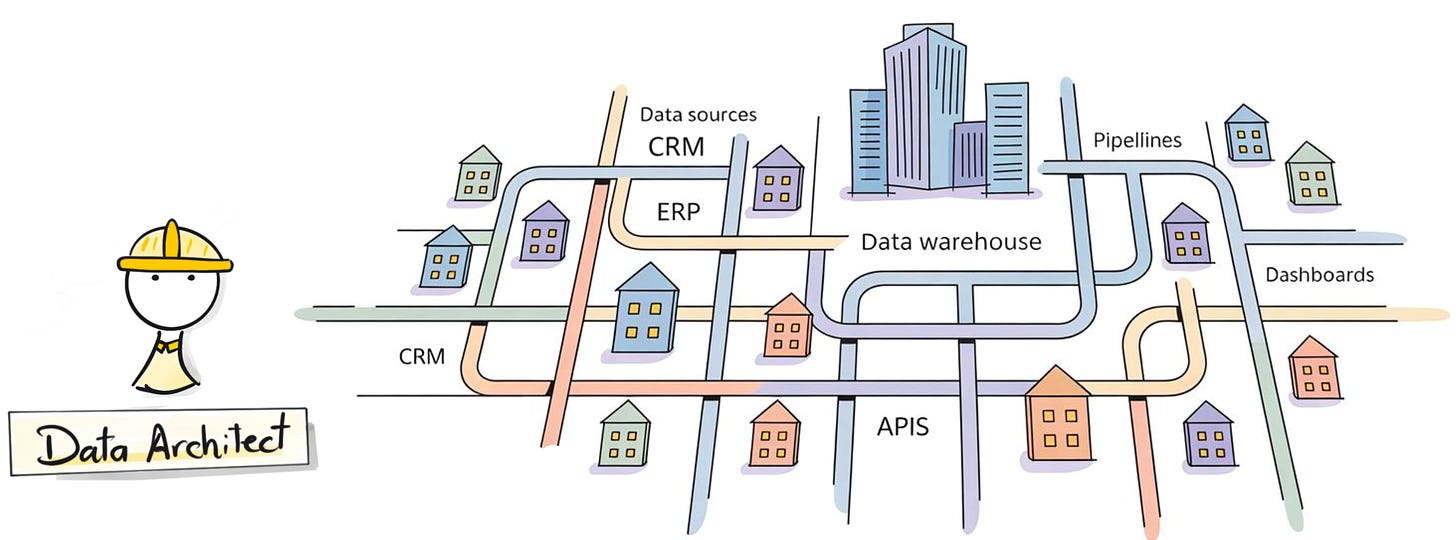What Is a Data Architect (Really)?
Part 1 of the Data Architect Series: exploring the principles, mindset, and real work behind data architecture.
There comes a moment in every data professional’s journey when the problems stop being technical.
You know how to write SQL. You can build pipelines. You understand the tools. But somehow, things still don’t fit together.
Dashboards show different numbers. Pipelines overlap. Teams argue about which version of the truth is correct.
That is the moment when you realize the challenge is no longer about code.
It is about design.
And that’s where the real work of a Data Architect begins.
What Is a Data Architect
A Data Architect designs how an organization’s data fits together.
They create the structure, flow, and meaning that allow people and systems to use data with confidence.
Think of a Data Architect as the city planner of a data landscape.
They don’t build every road or house themselves.
They decide where those roads should go, how traffic should move, and how the city can grow safely without falling apart.
In real life, a Data Architect answers questions like:
How should data move from source systems into analytics platforms?
How should we model entities like customers, products, and orders?
How can we keep definitions consistent across teams?
How do we design for reliability and future growth?
Are the tools we’re using in analytical projects the right ones?
Does this project align with the company’s overall data strategy?
How do we secure and govern our data effectively?
I used to think architecture meant mastering tools.
But the more systems I worked with, the clearer it became: it’s not about tools. It’s about how those tools fit together in time and meaning.
A good architect doesn’t think in technology. They think in systems. They design environments that evolve instead of collapse.
Keep reading with a 7-day free trial
Subscribe to Data with Baraa to keep reading this post and get 7 days of free access to the full post archives.


